Ruger 57 5.7X28MM 4.94" 20rd SS/Turquoise – 16406 For Sale
$699.99
The Ruger 57 is a stylish and high-performing firearm, distinguished by its sleek Stainless Steel and Turquoise finish. It features a 4.94-inch alloy steel barrel with a black nitride finish for enhanced durability. The pistol incorporates a Secure Action fire-control system with a protected internal hammer and bladed-safety trigger, providing a smooth, reliable shooting experience. Ergonomically designed, it offers an easy trigger reach, a 1911-style ambidextrous manual safety, and a robust slide release. The reversible magazine release makes it versatile for both left and right-handed users. With a 20-round capacity, the Ruger 57 combines significant firepower with excellent control and ease of use, merging innovation and tradition in a dependable and stylish design.
Is a 5.7 more powerful than a 9mm?
The 5.7x28mm and the 9mm (9x19mm Parabellum) are two different cartridges with distinct characteristics, and which one is “more powerful” can depend on the context and specific criteria, such as velocity, energy, penetration, and intended use.
1. **Velocity and Energy**: The 5.7x28mm cartridge typically has a higher velocity compared to standard 9mm rounds, which can result in greater kinetic energy on impact. This gives the 5.7 a flatter trajectory and potentially better penetration in certain scenarios.
2. **Penetration**: The design of the 5.7 cartridge allows for excellent penetration, particularly against body armor. This was one of the reasons for its development and is a point where it can outperform the 9mm.
3. **Stopping Power**: The 9mm is generally considered to have greater stopping power due to its larger bullet diameter and weight. It is often favored for self-defense because it can deliver effective energy transfer to the target over shorter distances.
4. **Recoil and Handling**: Generally, the 5.7mm produces less recoil than the 9mm, allowing for potentially greater accuracy and faster follow-up shots.
Each cartridge has its own strengths and is suited for different applications, so whether one is “more powerful” than the other is not straightforward and depends on the specific use case and personal preference.
What is the 5.7 x28 good for?
The 5.7x28mm cartridge is known for several key attributes that make it suitable for various applications:
1. **High Velocity**: The cartridge is capable of achieving high velocities, which contributes to its effective range and flat trajectory.
2. **Low Recoil**: The 5.7x28mm produces relatively low recoil compared to larger handgun calibers, improving accuracy and ease of handling.
3. **Armor Penetration**: Originally developed for military and law enforcement, the cartridge can penetrate soft body armor when using suitable ammunition, making it useful in tactical situations.
4. **Versatility**: It can be effectively used in both pistols and compact carbines/submachine guns, offering flexibility in operational use.
5. **Lightweight Ammunition**: The small, lightweight nature of the cartridge allows users to carry more ammunition compared to larger caliber rounds, which is advantageous in sustained operations or encounters.
Due to these properties, the 5.7x28mm is favored in some law enforcement, military, and civilian contexts where its specific benefits align with the needs of the users.
Is the Ruger 57 good for self-defense?
The Ruger 57 is a semi-automatic pistol chambered in 5.7x28mm, a lightweight, high-velocity round. Whether it is good for self-defense depends on a few factors:
1. **Caliber**: The 5.7x28mm round is known for its low recoil, high magazine capacity, and ability to penetrate body armor, but it may have less stopping power compared to larger calibers like 9mm or .45 ACP commonly used for self-defense.
2. **Ergonomics and Handling**: The Ruger 57 has a good grip and sights, making it relatively easy to handle and shoot accurately, which is important in self-defense situations.
3. **Capacity**: It typically offers a higher magazine capacity compared to many traditional self-defense handguns, allowing for more rounds without reloading.
4. **Ammunition Availability**: Depending on your location, 5.7x28mm ammunition might be more expensive or harder to find compared to more common calibers like 9mm.
Whether the Ruger 57 is good for self-defense will depend on your personal preference, experience, and intended use. It’s always best to try shooting one at a range to see if it suits your needs and to practice regularly if you choose it for self-defense.
Can a civilian own a FN-57?
Yes, a civilian can own an FN Five-seveN pistol in the United States. It is available for purchase in many states, provided the buyer complies with federal and state firearm regulations, which include background checks and any applicable waiting periods. However, gun laws vary significantly by state and locality, so it is important for potential buyers to verify the specific regulations in their area.
Will 5.7 x28 stop a bear?
The 5.7x28mm cartridge is known for its high velocity and armor-piercing capabilities, especially against small targets. However, it is generally considered insufficient for stopping a large and heavily built animal like a bear. Bears have thick skulls and dense muscle mass, and stopping them typically requires larger caliber cartridges with significant stopping power, such as those from high-powered rifles (.30-06 Springfield, .300 Winchester Magnum) or large-bore handguns (.44 Magnum and above).
For safety in bear country, it is recommended to use firearms specifically designed for big game hunting or carry bear spray as a deterrent. Always prioritize safety and adhere to local wildlife guidelines.
What caliber is a 5.7 x28 equivalent to?
The 5.7x28mm cartridge is roughly equivalent to a .22 caliber in terms of bullet diameter, as the projectile is approximately 0.224 inches (5.7mm) in diameter.
Will 5.7 penetrate body armor?
The 5.7x28mm cartridge, commonly used in certain firearms like the FN Five-seveN and the FN P90, has the potential to penetrate some types of body armor, particularly those rated at lower protection levels. However, the ability to penetrate body armor depends on several factors, including the specific type of ammunition used (e.g., standard vs. armor-piercing variants) and the level of body armor. Generally, softer armor (Level I, IIA, or II) is more likely to be penetrated by certain variants of the 5.7x28mm round, while higher-rated armor (such as Level III or IV, which often includes hard plates) is specifically designed to stop such rounds. For precise information, it is important to refer to the specific type of armor and ammunition in question.
What is the difference between a 223 and a 5.7 x28?
The primary differences between a .223 Remington and a 5.7x28mm cartridge are in their dimensions, ballistics, and intended uses:
1. **Dimensions and Design**:
– The **.223 Remington** is a larger cartridge, with a bullet diameter of approximately 5.56 mm (.224 inches), and is known for its prominent bottleneck shape. It typically features a case length of 45 mm and is designed for rifles.
– The **5.7x28mm** cartridge is smaller, with a bullet diameter of about 5.7 mm (.224 inches), and is designed with a shorter case length of 28 mm. It was developed for use in both pistols and PDWs (personal defense weapons).
2. **Ballistics**:
– **.223 Remington** rounds are generally more powerful, with higher velocity and typically greater effective range and energy. They are well-suited for medium- to long-range shooting and are commonly used in rifles such as the AR-15.
– The **5.7x28mm** is designed for relatively short to medium-range engagements. It provides high velocity and low recoil, but with less energy compared to the .223 Remington, making it suitable for self-defense and close-quarters situations.
3. **Intended Uses**:
– **.223 Remington** is widely used in civilian, law enforcement, and military applications for target shooting, hunting, and tactical uses.
– **5.7x28mm** is used in specialized PDWs and handguns, offering capabilities for armor penetration and effectiveness in self-defense scenarios.
These differences in size, power, and application influence how each cartridge is utilized in different shooting contexts.
How lethal is the 5.7 round?
The 5.7x28mm round, developed by FN Herstal, is known for its high velocity and ability to penetrate body armor. It is less common than other calibers like 9mm, but it offers certain advantages, including reduced recoil and a flatter trajectory. The lethality of the 5.7 round can be significant, especially at close range, due to its ability to penetrate ballistic protection. However, like any ammunition, its effectiveness depends on factors such as shot placement, the type of ammunition used (e.g., hollow point vs. full metal jacket), and the range at which it is fired. While it is designed for tactical use, civilian versions are generally less penetrating. Overall, the 5.7 round is considered lethal, but its practical effects will vary based on the specific circumstances.
What is more powerful than a 9mm?
A .45 ACP (Automatic Colt Pistol) cartridge is generally considered more powerful than a 9mm. It typically has a larger bullet diameter, greater weight, and delivers more energy upon impact, resulting in greater stopping power. However, it’s important to note that “power” can vary depending on the specific needs and constraints of the user, including considerations of ammo capacity, recoil, and firearm size.
How lethal is the 5.7 round?
The 5.7x28mm round, developed by FN Herstal, is designed to be effective at penetrating body armor while maintaining a relatively low recoil. The lethality of a 5.7 round can depend on various factors such as the type of ammunition used (armor-piercing vs. hollow point), the range at which it is fired, and the specific circumstances of its use.
In general, the round is known for its high velocity and ability to defeat ballistic protection at close to medium range. While it can be lethal, especially when targeting vital areas, its terminal ballistics (the behavior of the bullet upon impact) are often compared to those of more commonly used handgun calibers, like 9mm, rather than to larger rifle calibers.
Overall, the 5.7x28mm is a specialized cartridge with applications in law enforcement and military settings, where defeating body armor may be necessary, but its lethality in civilian contexts aligns more with typical pistol calibers.
Why is the 5.7 mm so popular?
The 5.7mm cartridge, specifically the 5.7x28mm, is popular for several reasons:
1. **High Velocity:** The 5.7x28mm is known for its high muzzle velocity, which contributes to its flatter trajectory and better accuracy over long distances compared to some other handgun cartridges.
2. **Low Recoil:** Despite its high velocity, the 5.7mm round typically produces less recoil. This makes it easier to shoot accurately, especially in rapid-fire situations.
3. **Armor Penetration:** Originally developed for military and law enforcement use, the 5.7x28mm was designed to penetrate body armor, making it effective in tactical situations.
4. **Magazine Capacity:** The smaller size of the 5.7mm round allows for higher magazine capacities compared to larger calibers, meaning more rounds can be carried without increasing magazine size.
5. **Versatility:** The 5.7mm is used in various weapon platforms, from handguns like the FN Five-seven to personal defense weapons like the FN P90, enhancing its versatility for different applications.
6. **Innovation:** As a relatively newer round compared to traditional handgun calibers, the 5.7x28mm has attracted interest for its innovative characteristics and potential for new applications.
Overall, these attributes contribute to the 5.7mm’s popularity among certain military, law enforcement, and civilian shooters who value its unique combination of features.
Is 5.7 bigger than 223?
No, 5.7 is not bigger than 223.
| Model | 57 |
|---|---|
| Action | Semi-Auto |
| Sights | Fiber Front & Adjustable Rear |
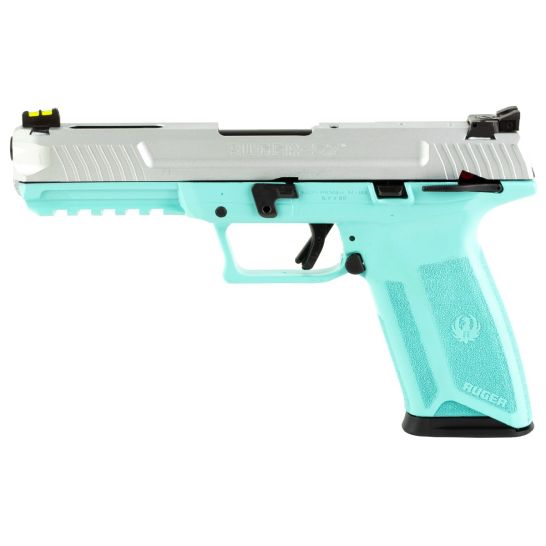
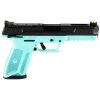
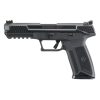
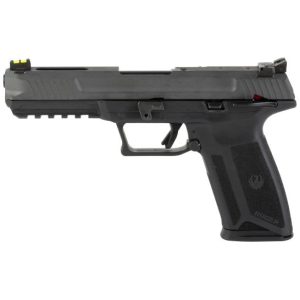
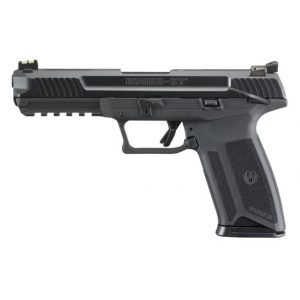
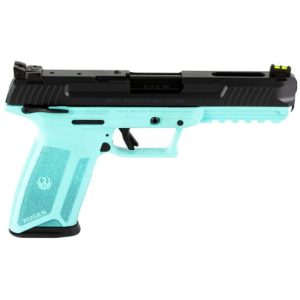
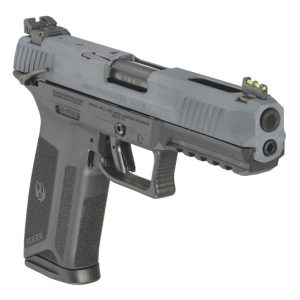
Reviews
There are no reviews yet.